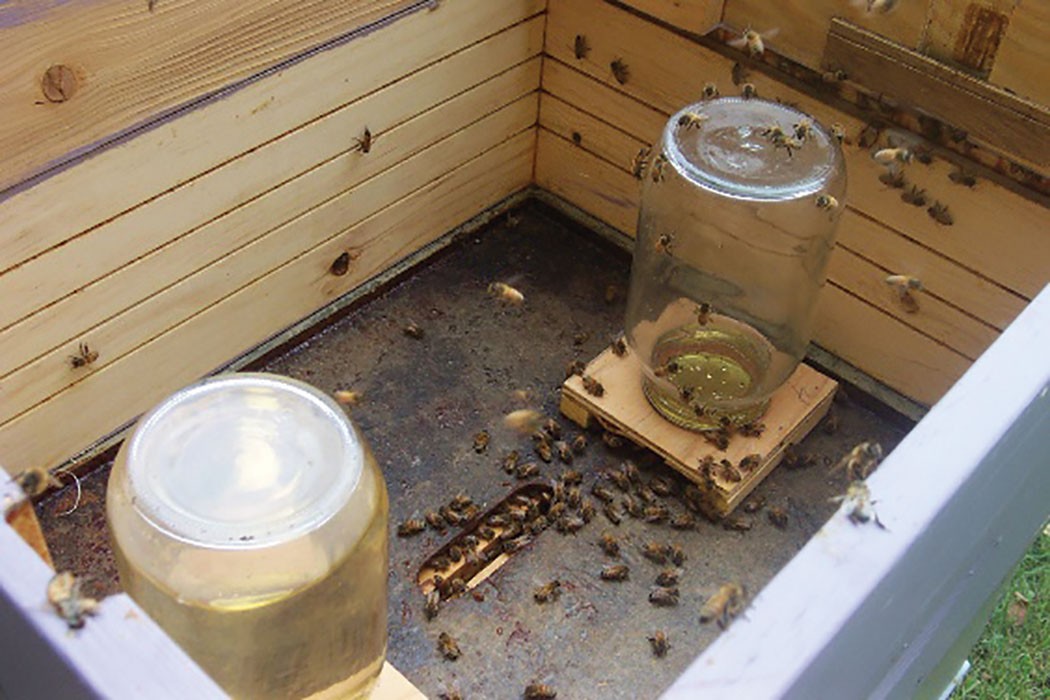by Ed Simon
Introduction:
Spring is here again and you have decided to double your hive count. Of course that mans that there will be a significant investment in woodenware. There is also another investment that is easy to overlook. It is the feeder required to get your new hives off to a roaring start. They can easily cost $3.65 for a Boardman style feeder or $6.00 for a frame feeder to $32.00 for a full hive top feeder. But available at a very inexpensive price is the old canning jar feeder. Used canning jars are readily available in pint and quart sizes at many of the used merchandise stores such as Goodwill or Salvation Army.
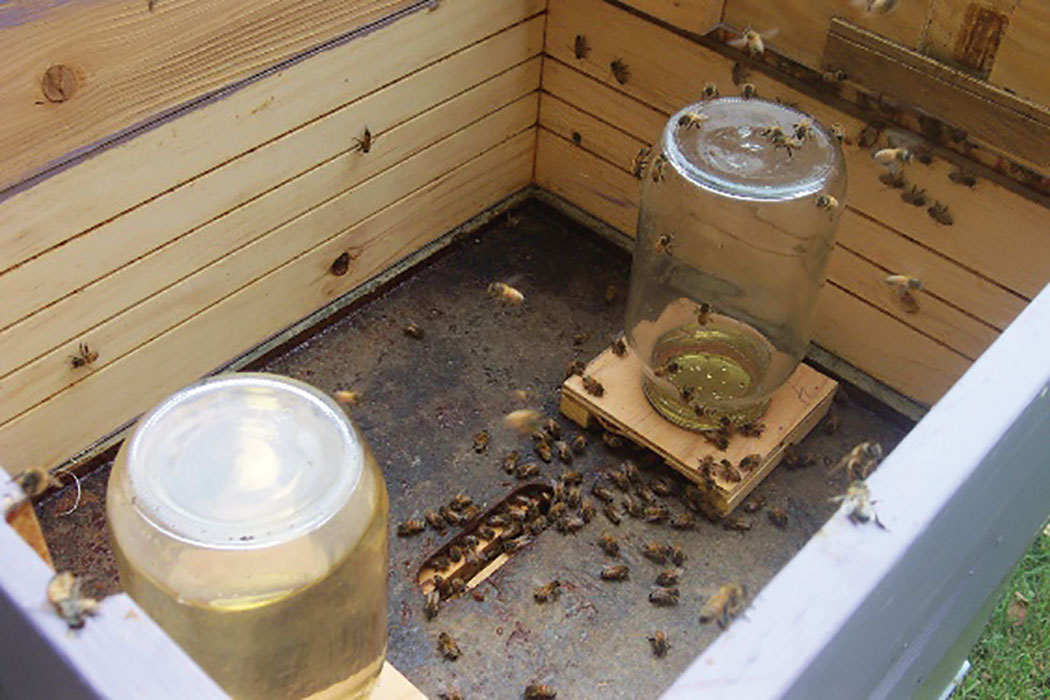
You will need a device that allows the bees access to the syrup. You can make a number of feeder jar stands very quickly. It is actually easier to make many at a time as compared to making one or two. The members of your bee club will be happy to relieve you of the extra ones you make.
Material:
⅜” x 9” x 8’ Plywood base (1) – makes 24 stands
¾” x ⅝” x 8’ Stand legs (4)
Special tool:
A hole cutter that will cut a 2¾” diameter hole is needed. One of the most inexpensive ones is an adjustable circle cutter pictured here. Most hardware stores carry this type of cutter.
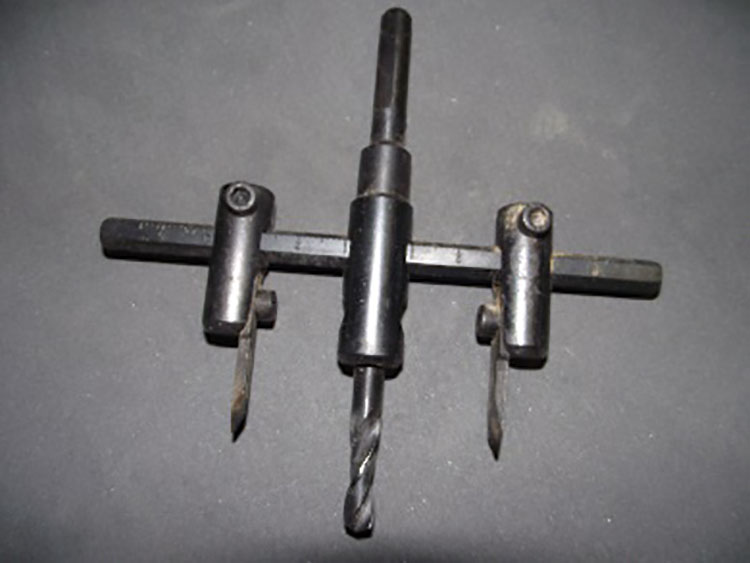
Construction:
This article will describe making 24 feeder jar stands.
Because:
1) It is safer
2) It is easier than making one
Step 1: Working from one side of part #1, mark a line 2 1/8” for the length of the plywood. This is one of the center lines for the drill. Then duplicate this line on the other edge of the wood. You should now have 2 parallel lines for the length of the plywood.
Step 2: Now mark the cross line for the centers by starting 2” in from one end and then marking every 4”. Do this on both of the center lines marked in step #1. The picture shows the drill marking as circles and the cutting lines as dashes. You do not need to mark the cutting lines. They are there for illustration purposes only.
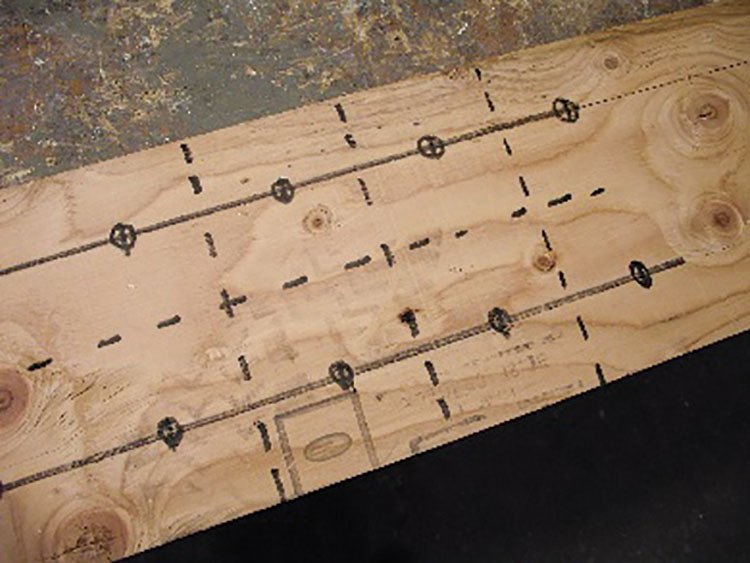
These drilling centers will provide for a 4” x 4” platform base for the jar with a 2 ¾” hole in the center.
Step 3: If you are working with an 8’ length of plywood then I recommend that you cut it into two 4’ sections. This will make handling the wood much easier.
Step 4: Drill 2 ¾” holes at the marked locations. To make a smoother cut only drill ¾ of the way through the plywood and then turn it over and finish the hole from the other side of the wood.
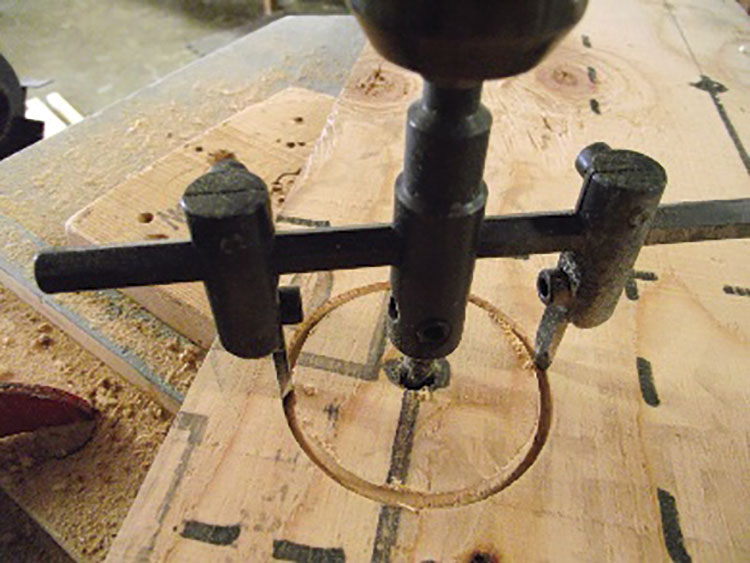
Note: A drill press is best used for this operation. It makes drilling significantly easier and safer.
Caution: Using a hole cutter like the one pictured can be very dangerous. The bar that holds the cutter heads can fly around at a speed that makes it difficult to see. If your hand or anything else gets in the way, it is guaranteed to hurt.
Step 5: Once the holes are drilled, cut the plywood in half lengthwise.
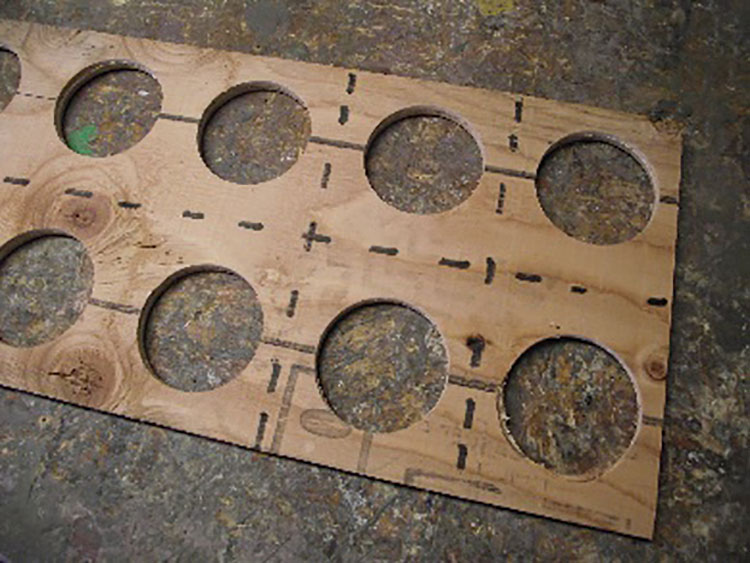
Step 6: Using ¾” wood cut parts #2. One piece is needed for each edge of the plywood.
Step 7: Glue & nail or staple legs (parts #2) to the bottom of the base. It is easiest to nail from the top through the plywood into the leg. Use one nail or staple on each corner of the hole to ensure a solidly attached leg.
Make sure that the leg does not cover any part of the hole in the base
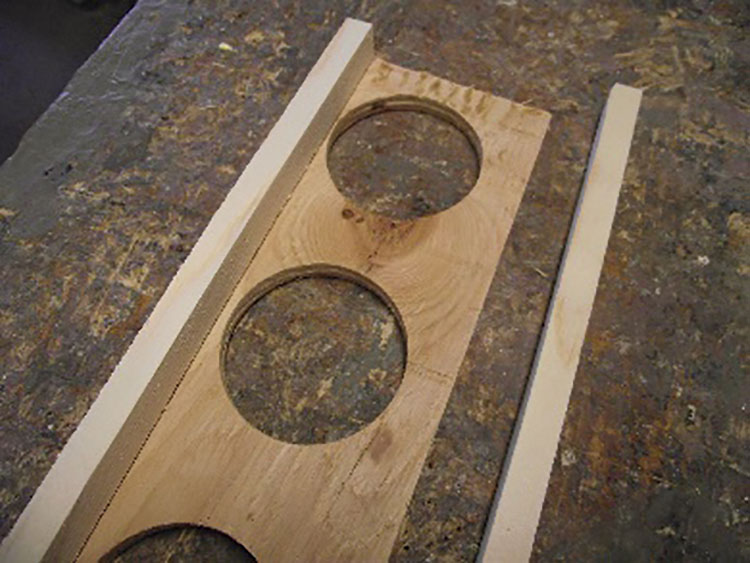
Note: I bet you didn’t know that circles have corners. They don’t but this was the easiest way to explain the positioning of the nails.
Step 8: Once the glue is dry you can cut individual stands from the strip.
Usage: After filling your jars with syrup, invert them and place them in the hole in the stand. Place the stand on the inner cover and place an empty hive body over/around the stand to protect it. A stand with pint canning jars can be covered or protected with a medium hive body. A quart jar will fit inside a deep hive body.
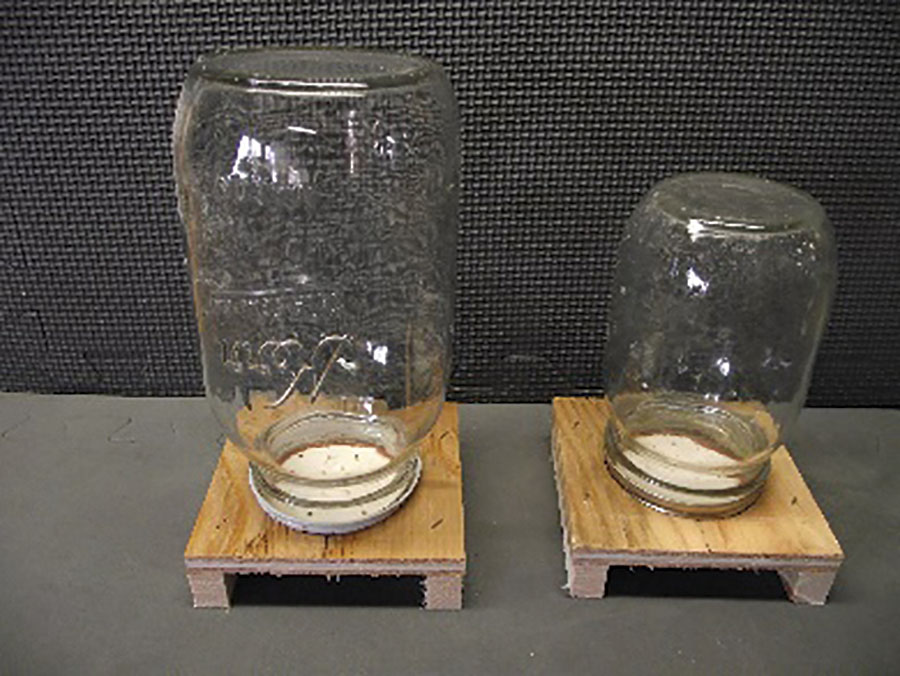
Warning: In the Spring and Fall, the temperature differences between night and day can cause the syrup to be pushed out of the feeder jar. Make sure the jar is away from the hole in the inner cover so the liquid does not drip on to the bees.
Conclusion: During the times of the year when the bees are feeding heavily you can add as many feeders as there is room for on the inner cover. If you overlap the filling of the feeders, you can make sure the bees always have food. When the feeding slows down and there is a possibility of the syrup fermenting, all you need to do is remove the extra feeders and the spoilage will be kept to a minimum.
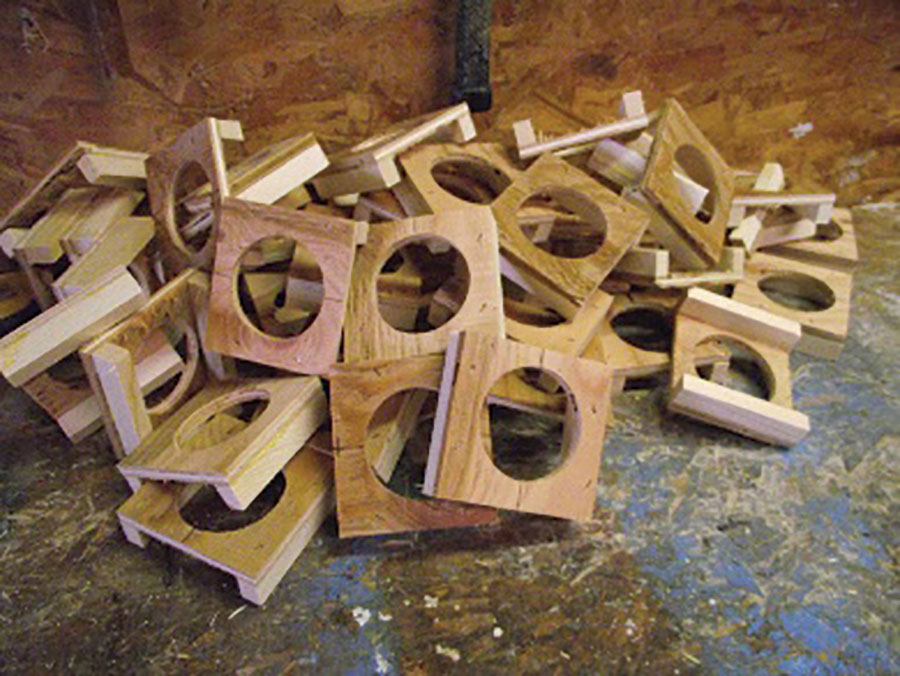
Addendum: Creating feeder jar lids
Lids for the canning jar feeder can be made very easily by pounding small nails in the lid. An easier way is to use a brad gun with an 18 gage brad to pierce the lids. Place a stack of lids on a piece of polystyrene and then use the brad gun to make the holes. The insulation is used so the brads do not nail the tops to the workbench. It may take a little work to remove the brads from the lids, but it is easier than using a small nail or a punch and hitting your fingers.
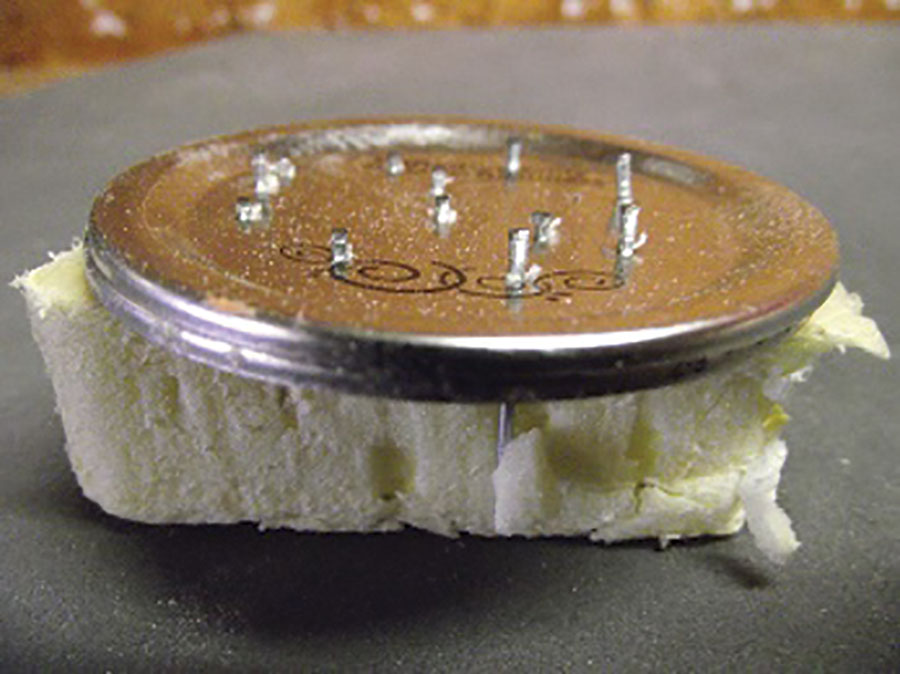
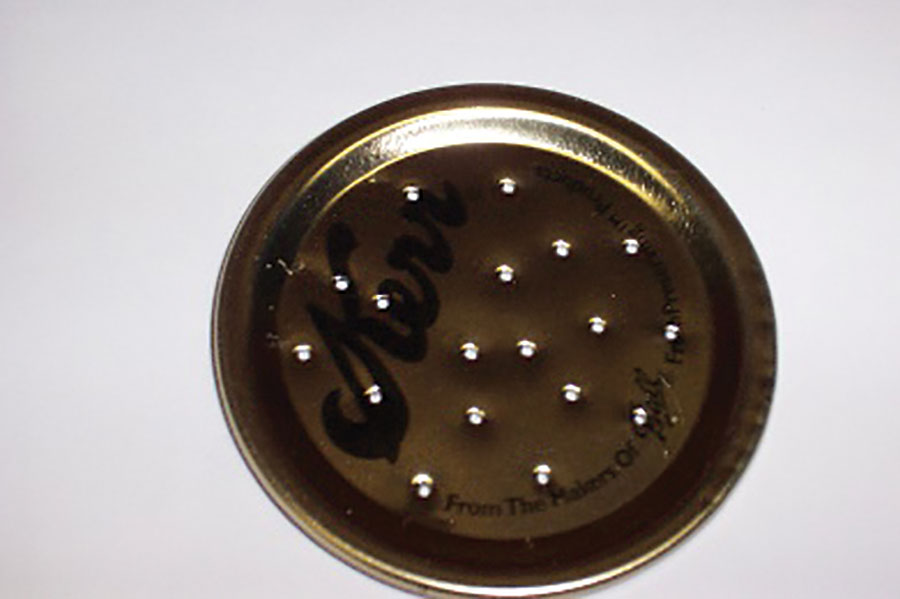
Get a copy of Ed Simon’s book Bee Equipment Essentials with detailed drawings, construction hints and how-to-use instructions for dozens of beekeeping tools and equipment from www.wicwas.com. Ed can be contacted through Ed@TheBeeShed.com. Now online are all of Ed’s Bee Culture magazine articles. They can be accessed through The Bee Shed website at www.thebeeshed.com/publications.html.







